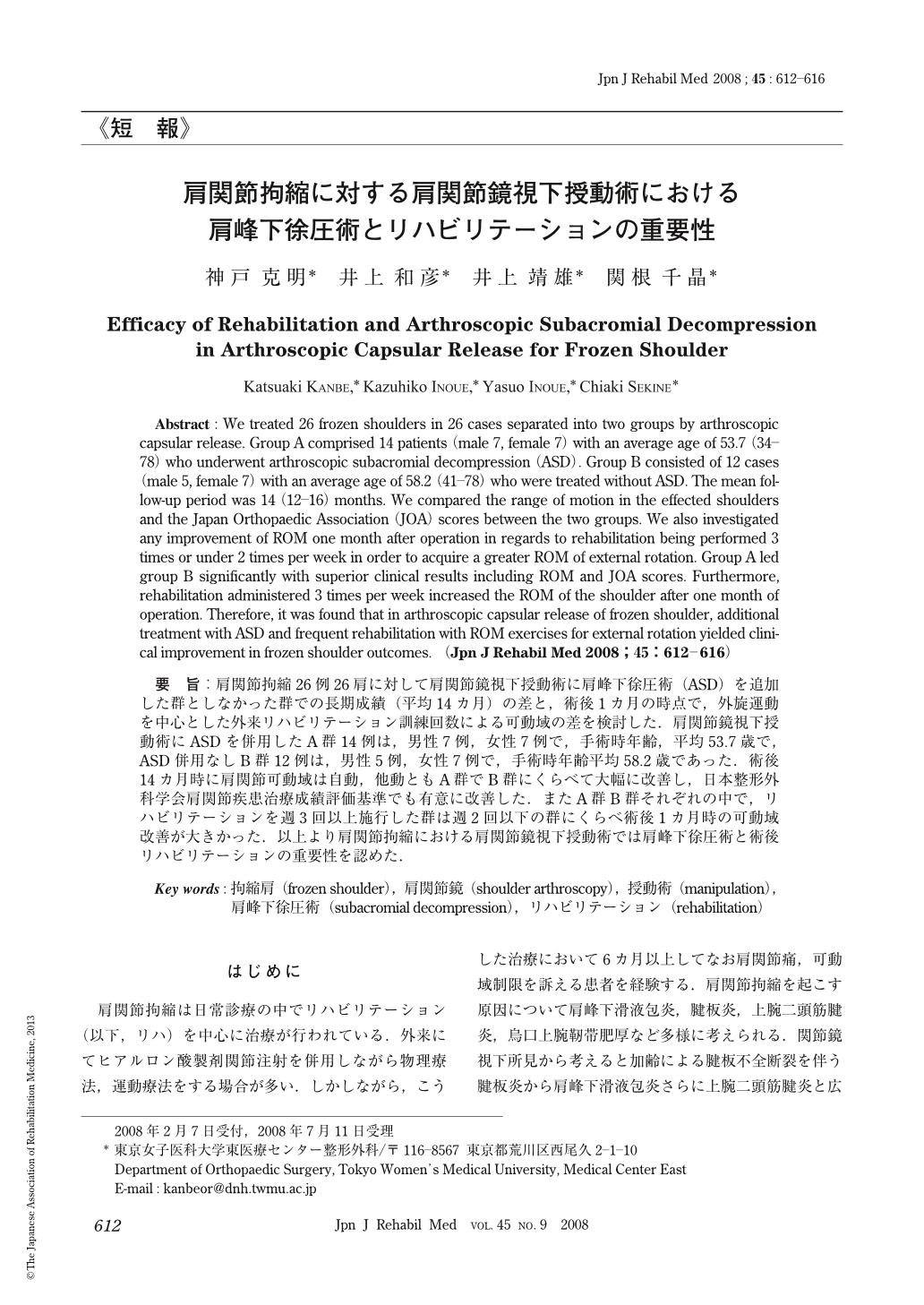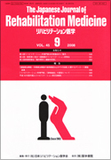Japanese
English
- 販売していません
- Abstract 文献概要
- 1ページ目 Look Inside
- 参考文献 Reference
要旨:肩関節拘縮26例26肩に対して肩関節鏡視下授動術に肩峰下徐圧術(ASD)を追加した群としなかった群での長期成績(平均14カ月)の差と,術後1カ月の時点で,外旋運動を中心とした外来リハビリテーション訓練回数による可動域の差を検討した.肩関節鏡視下授動術にASDを併用したA群14例は,男性7例,女性7例で,手術時年齢,平均53.7歳で,ASD併用なしB群12例は,男性5例,女性7例で,手術時年齢平均58.2歳であった.術後14カ月時に肩関節可動域は自動,他動ともA群でB群にくらべて大幅に改善し,日本整形外科学会肩関節疾患治療成績評価基準でも有意に改善した.またA群B群それぞれの中で,リハビリテーションを週3回以上施行した群は週2回以下の群にくらべ術後1カ月時の可動域改善が大きかった.以上より肩関節拘縮における肩関節鏡視下授動術では肩峰下徐圧術と術後リハビリテーションの重要性を認めた.
Abstract : We treated 26 frozen shoulders in 26 cases separated into two groups by arthroscopic capsular release. Group A comprised 14 patients (male 7, female 7) with an average age of 53.7 (34. 78) who underwent arthroscopic subacromial decompression (ASD). Group B consisted of 12 cases (male 5, female 7) with an average age of 58.2 (41.78) who were treated without ASD. The mean follow-up period was 14 (12.16) months. We compared the range of motion in the effected shoulders and the Japan Orthopaedic Association (JOA) scores between the two groups. We also investigated any improvement of ROM one month after operation in regards to rehabilitation being performed 3 times or under 2 times per week in order to acquire a greater ROM of external rotation. Group A led group B significantly with superior clinical results including ROM and JOA scores. Furthermore, rehabilitation administered 3 times per week increased the ROM of the shoulder after one month of operation. Therefore, it was found that in arthroscopic capsular release of frozen shoulder, additional treatment with ASD and frequent rehabilitation with ROM exercises for external rotation yielded clinical improvement in frozen shoulder outcomes.

Copyright © 2008, The Japanese Association of Rehabilitation Medicine. All rights reserved.


